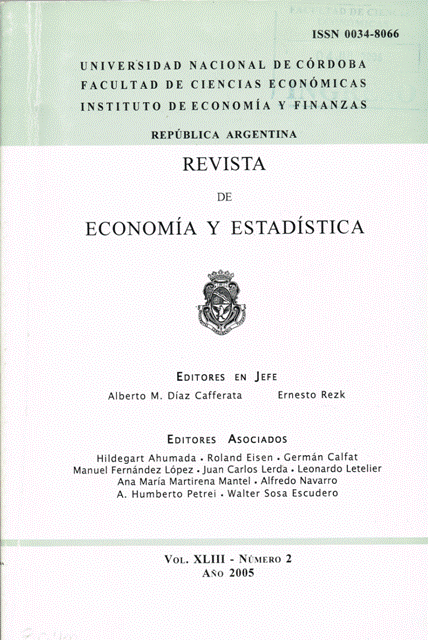Birth and Early History of Nonlinear Dynamics in Economics
DOI:
https://doi.org/10.55444/2451.7321.2005.v43.n2.3817Keywords:
nonlinear modelling, economic cycles, macrodynamics, endogeneous/exogenous fluctuations, history of thought 1930-1950Abstract
Since the 1980s, nonlinear dynamic modelling is becoming a popular methodology in economics. However, it is not as new as many researchers seem to believe. Before the linear approach dominated economic theory around the 1950s, many economists were actively involved in the development of nonlinear models, this tendency being particularly strong during the period 1930-1950. The main objective of this essay is to offer a systematic and comprehensive survey of the early developments in nonlinear dynamics in economics, ranging form Frisch’s original impulse and propagation model in 1933, to Goodwin’s formalisation of the limit cycle in 1951.
Downloads
Downloads
Published
Issue
Section
License
Copyright (c) 2005 Eugenia Perona

This work is licensed under a Creative Commons Attribution-NonCommercial-NoDerivatives 4.0 International License.
Authors who have publications with this journal agree to the following terms:
Authors retain their copyright and grant the journal the right of first publication of their work, which is simultaneously subject to the Creative Commons Attribution-NonCommercial-NoDerivatives 4.0 International License that allows third parties to share the work provided that its author and first publication in this journal are indicated.
Authors may adopt other non-exclusive licensing arrangements for distribution of the published version of the work (e.g. depositing it in an institutional telematic archive or publishing it in a monographic volume) as long as the initial publication in this journal is indicated.
Authors are allowed and encouraged to disseminate their work via the Internet (e.g. in institutional telematic archives or on their website) before and during the submission process, which can lead to interesting exchanges and increase citations of the published work. (See The Open Access Effect)














